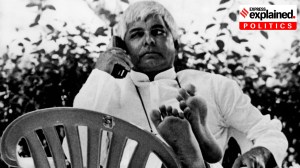Army chief says surveillance gear needed in Kashmir
AUGUST 10: The Indian Army Chief said on Thursday he needed surveillance radars and ground sensors in Kashmir, where his forces were surpr...

AUGUST 10: The Indian Army Chief said on Thursday he needed surveillance radars and ground sensors in Kashmir, where his forces were surprised by a big border incursion last summer.
General Ved Prakash Malik told a business conference today that last summer’s bloody face-off with Pakistan-backed forces in the Kargil sector of Kashmir had exposed gaps in the Indian army’s intelligence, reconnaissance and surveillance.
"For surveillance, we need well-equipped outposts, ground sensors, battlefield surveillance radars, unmanned aerial vehicles, satellite imagery, AWACS (airborne warning and control systems) and so on," he said.
Malik said the army needed to modernise rapidly and India’s growing prowess in information technology must be used for National security.
"Although the country has emerged as a civilian IT power, this power is yet to be fully exploited for national security and defence," he said at the conference, which was called to deepen links between the military and private industry.
The government said this week there were reports of 2,000 to 2,500 guerrillas waiting to cross into the revolt-racked state of Jammu and Kashmir, where a frontline militant group called off a unilateral ceasefire on Tuesday.
Separately, Defence Minister George Fernandes told parliament on Thursday that the Indian army had evaluated the Russian T-90 tank and found it suitable for its needs.
"Army judgement would be the last word and the army has nowevaluated and decided that this is the tank it needs," he said in answer to a question in the lower house.
The army plans to buy 124 of the tanks "off-the-shelf" and to assemble a further 186 at an arms factory in the country.
The government, earlier this year announced a staggering 28 percent increase in defence spending for 2000-2001 (April-March), clearing the way for the reconstruction of a military machine emasculated by years of deep funding cuts.



- 01
- 02
- 03
- 04
- 05



























